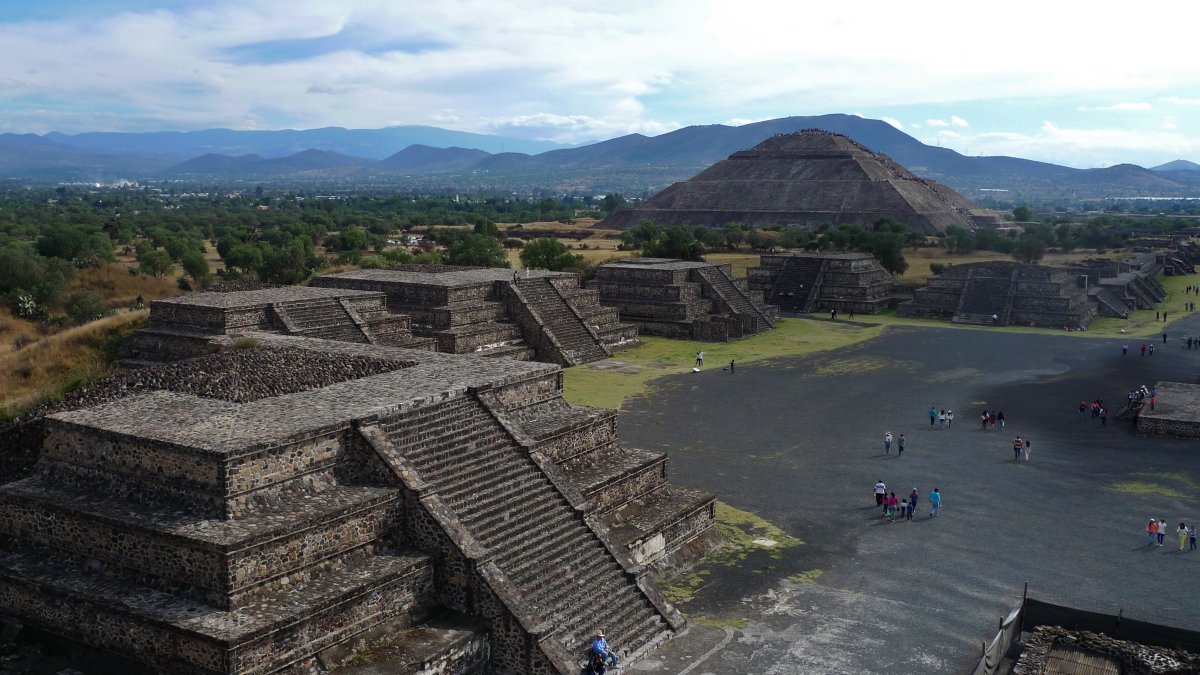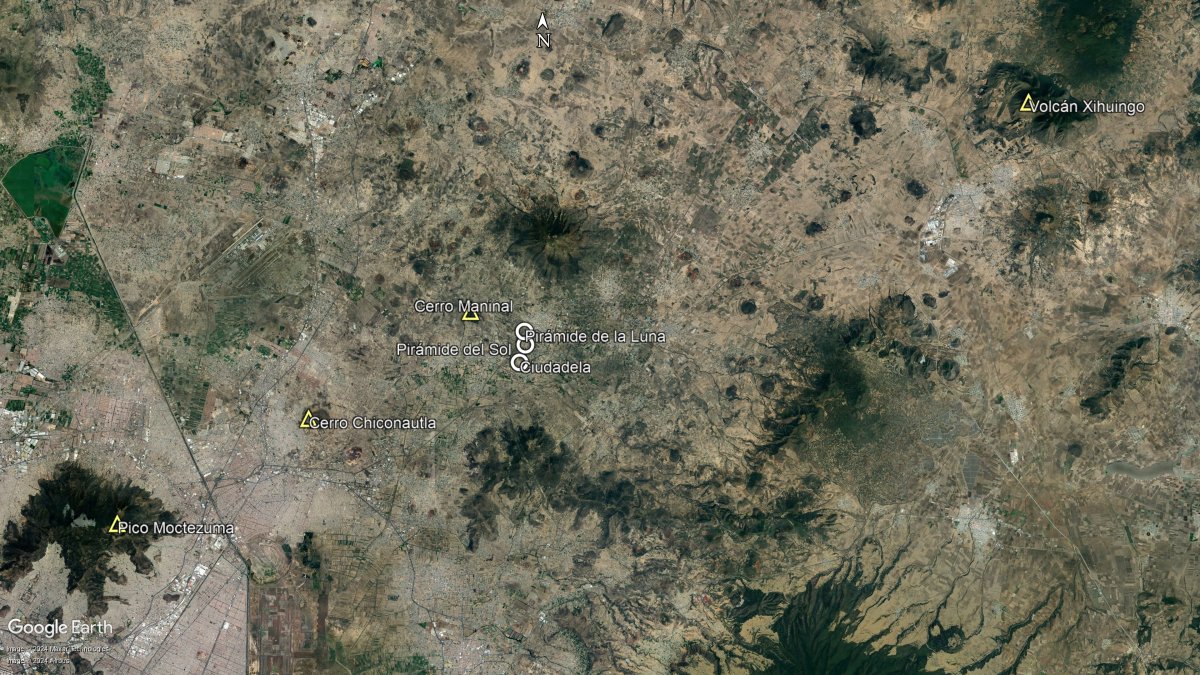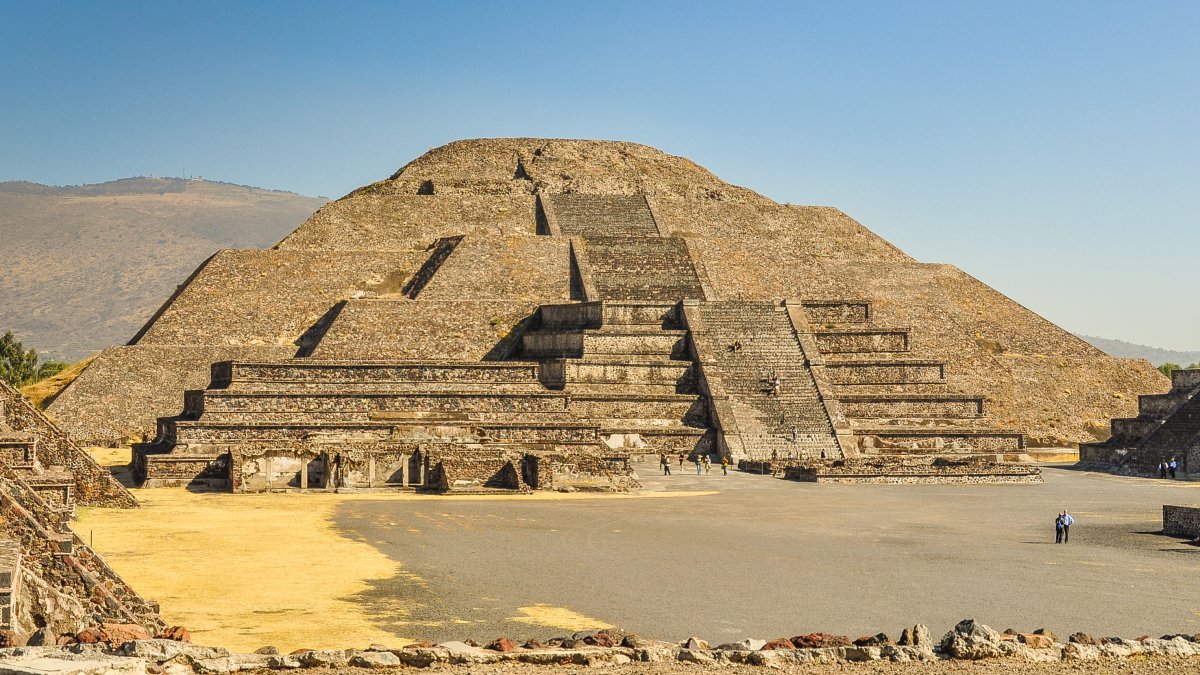[ad_1]
Archaeologists have shed new light on the astronomical alignments of a spectacular ancient pyramid in Mexico during investigations conducted at the site of an iconic pre-Hispanic city. And Newsweek spoke with one of the archaeoastronomers on the project.
The monument in question, known as the Pyramid of the Moon, lies in the ancient Mesoamerican city of Teotihuacan, which is located about 30 miles NE of modern-day Mexico City.
While located close to the site of the former capital of the Aztec Empire, Teotihuacan predated this civilization by several centuries, seemingly reaching its peak during the first half of the 1st millennium B.C.—at which point it was the largest city in the Americas.
The archaeological site is renowned for many reasons, perhaps most notably for its two largest pyramid structures—the Pyramid of the Moon and the bigger Pyramid of the Sun. These monuments are considered to be among the most significant examples of such structures from the pre-Hispanic Americas.

Rafael Morales Orozco
The sun played a fundamental role in the worldview of ancient Mesoamerican peoples. Among other roles, the solstices and equinoxes functioned as markers that were used to determine the orientations of architectural structures, such as pyramids.
Previous archaeoastronomical research investigating the orientation of Teotihuacan’s buildings has largely focused its attention on the Pyramid of the Sun, highlighting the significance of its astronomical alignments.

But some scholars, such as the researchers responsible for the latest investigations at Teotihuacan, take a slightly different view on the prominence of the Pyramid of the Sun. In part, this is because, despite its large size, the monument is located on one side of the Avenue of the Dead, unlike the Pyramid of the Moon, which takes up a privileged location at the end of the road. The Avenue of the Dead is a wide road that serves as the backbone of the city.
“It is thanks to the masterful design of this causeway that when you walk along it, the observer’s vision is guided by the architectural landscape towards the Pyramid of the Moon,” archaeoastronomer Aarón Uriel González Benítez of Mexico’s National School of Anthropology and History (ENAH) told Newsweek.
With this in mind, a research team coordinated by Ismael Arturo Montero García of the University of Tepeyac, in collaboration with Benítez and other colleagues, decided to carry out an archaeoastronomical study. The aim was to demonstrate the significance of the vertices of the main monuments of Teotihuacan. A vertex (plural: vertices) is a point where two edges meet. The corners of a pyramid are vertices, for example.
Based on their findings, the researchers propose that the northeast and southwest vertices of the Pyramid of the Moon align “exceptionally” with the position of the sun in the sky at sunrise on the summer solstice and sunset on the winter solstice, respectively, as well as important points in the surrounding landscape.

Aristos Georgiou
For example, during the summer solstice, the longest day of the year, the sun rises at dawn over the Xihuingo volcano to the northeast when viewed from the top of the Pyramid of the Moon, while at dusk it sets behind the Maninal Hill to the west.
Meanwhile, the southwest vertex of the Pyramid points towards a hill called Chiconautla. As the sun sets on the winter solstice, it passes over Chiconautla before becoming obscured behind the southern slope of another prominent point, Moctezuma Peak, which lies almost directly behind the hill in a roughly similar line of sight (when observing from the Pyramid of the Moon).

Google Earth
Archaeological evidence shows that Chiconautla and the Xihuingo volcano were elevated points of great significance for the Teotihuacanos—with the latter functioning as a kind of astronomical observatory for the civilization. The Maninal Hill also dominates the landscape to the west of Teotihuacan, whose creators appear to have constructed the Pyramid of the Moon to mimic its form.
“When the documentary filmmaker Rafael Morales Orozco made a drone flight during the sunset of the summer solstice we realized that in a close-up we can see how the silhouette of the Pyramid of the Moon impressively resembles the relief of Maninal, the place where the sun sets on those solstitial days,” Benítez said.

iStock
The researchers also uncovered other fascinating astronomical alignments during their research project. For example, the team found that, just as the northeast and southeast vertices of the Pyramids of the Moon display a strong association with the solstices, the northeast and southwest vertices of the Pyramid of the Sun “amazingly” align with the lunar standstills or “lunistices”.
A lunar standstill is when the moon reaches its most northerly or southerly points during the course of a month. Essentially, they are the lunar equivalent of solstices.
Overall, the research indicates that the layout of Teotihuacan was astronomically determined by the sun, focused on the Xihuingo-Chiconautla axis, according to the researchers.
It also suggests that, contrary to popular belief, the astronomical identity of the Pyramid of the Moon appears to be more strongly influenced by the movements of the sun, while the Pyramid of the Sun seems to have a stronger association with the movements of the moon.
According to the researcher, the names of the two pyramids were given to the monuments by the Mexica—the dominant ethnic group that ruled over the Aztec Empire—but at the moment, it is unknown what the Teotihuacans called them.
Do you have a tip on a science story that Newsweek should be covering? Do you have a question about archaeology? Let us know via science@newsweek.com.
Uncommon Knowledge
Newsweek is committed to challenging conventional wisdom and finding connections in the search for common ground.
Newsweek is committed to challenging conventional wisdom and finding connections in the search for common ground.
[ad_2]
Source link